Coupling of SWAT and WEAP Models for Quantifying Water Supply, Demand and Balance Under Dual Impacts of Climate Change and Socio-Economic Development: A Case Study from Cauto River Basin, Cuba
Abstract
1. Introduction
2. Materials and Methods
2.1. Study Area
2.2. Methods
2.2.1. General Framework
2.2.2. Water Supply Calculation
2.2.3. Water Demand and Balance Calculation
2.2.4. Impact Assessment of Climate Change and Socio-Economic Development
2.3. Climate Change and Socio-Economic Scenarios
2.3.1. Climate Change Scenarios
2.3.2. Socio-Economic Development Scenarios
3. Results
3.1. Water Supply
3.2. Water Demand
3.3. Water Balance
4. Conclusions
Author Contributions
Funding
Data Availability Statement
Conflicts of Interest
References
- United Nations (UN). The Sustainable Development Goals Report 2021; United Nations: New York, NY, USA, 2021. [Google Scholar]
- Cosgrove, W.J.; Loucks, D.P. Water management: Current and future challenges and research directions. Water Resour. Res. 2015, 51, 4823–4839. [Google Scholar] [CrossRef]
- Karmalkar, A.V.; Taylor, M.A.; Campbell, J.; Stephenson, T.; New, M.; Centella, A.; Benzanilla, A.; Charlery, J. A review of observed and projected changes in climate for the islands in the Caribbean. Atmósfera 2013, 26, 283–309. [Google Scholar] [CrossRef]
- Planos, E.; Guevara, A.V.; Rivero, R. Cambio Climático en Cuba: Vulnerabilidad, Impacto y Medidas de Adaptación; Multimedia Instituto de Meteorología, INSMET: La Habana, Cuba, 2013. [Google Scholar]
- Berbel, J.; Julia, M.-O.; Pascual, M. A cost-effectiveness analysis of water-saving measures for the water framework directive: The case of the Guadalquivir River Basin in Southern Spain. Water Resour. Manag. 2011, 25, 623–640. [Google Scholar] [CrossRef]
- Mirdashtvan, M.; Najafinejad, A.; Malekian, A.; Sa’doddin, A. Sustainable water supply and demand management in semi-arid regions: Optimizing water resources allocation based on RCPs scenarios. Water Resour. Manag. 2021, 35, 5307–5324. [Google Scholar] [CrossRef]
- Jayakrishnan, R.S.R.S.; Srinivasan, R.; Santhi, C.; Arnold, J.G. Advances in the application of the SWAT model for water resources management. Hydrol. Process. Int. J. 2005, 19, 749–762. [Google Scholar] [CrossRef]
- Arnold, J.G.; Moriasi, D.N.; Gassman, P.W.; Abbaspour, K.C.; White, M.J.; Srinivasan, R.; Santhi, S.; Harmel, R.D.; van Griensven, A.; Jha, M.K.; et al. SWAT: Model use, calibration, and validation. Trans. ASABE 2012, 55, 1491–1508. [Google Scholar] [CrossRef]
- Sieber, J.; Purkey, D. WEAP Tutorial; Stockholm Environment Institute: Stockholm, Sweden, 2008. [Google Scholar]
- Asghar, A.; Iqbal, J.; Amin, A.; Ribbe, L. Integrated hydrological modeling for assessment of water demand and supply under socio-economic and IPCC climate change scenarios using WEAP in Central Indus Basin. J. Water Supply Res. Technol. AQUA 2019, 68, 136–148. [Google Scholar] [CrossRef]
- Psomas, A.; Panagopoulos, Y.; Konsta, D.; Mimikou, M. Designing water efficiency measures in a catchment in Greece using WEAP and SWAT models. Procedia Eng. 2016, 162, 269–276. [Google Scholar] [CrossRef][Green Version]
- Touseef, M.; Chen, L.; Yang, W. Assessment of surface water availability under climate change using coupled SWAT-WEAP in Hongshui River Basin, China. ISPRS Int. J. Geo-Inf. 2021, 10, 298. [Google Scholar] [CrossRef]
- Hao, L.; Sun, G.; Liu, Y.; Qian, H. Integrated modeling of water supply and demand under management options and climate change scenarios in Chifeng City, China. JAWRA J. Am. Water Resour. Assoc. 2015, 51, 655–671. [Google Scholar] [CrossRef]
- Kishiwa, P.; Nobert, J.; Kongo, V.; Ndomba, P. Assessment of impacts of climate change on surface water availability using coupled SWAT and WEAP models: Case of upper Pangani River Basin, Tanzania. Proc. Int. Assoc. Hydrol. Sci. 2018, 378, 23–27. [Google Scholar] [CrossRef]
- Touch, T.; Oeurng, C.; Jiang, Y.; Mokhtar, A. Integrated modeling of water supply and demand under climate change impacts and management options in tributary basin of Tonle Sap Lake, Cambodia. Water 2020, 12, 2462. [Google Scholar] [CrossRef]
- Abbas, S.A.; Xuan, Y.; Bailey, R.T. Assessing climate change impact on water resources in water demand scenarios using SWAT-MODFLOW-WEAP. Hydrology 2022, 9, 164. [Google Scholar] [CrossRef]
- Montecelos-Zamora, Y.; Cavazos, T.; Kretzschmar, T.; Vivoni, E.R.; Corzo, G.; Molina-Navarro, E. Hydrological modeling of climate change impacts in a Tropical River Basin: A case study of the Cauto River, Cuba. Water 2018, 10, 1135. [Google Scholar] [CrossRef]
- Borrero, B.L. Atálogo de Cuencas Hidrográficas (RÍO CAUTO), CUBA; Instituto de Hidroeconomía: La Habana, Cuba, 1995. [Google Scholar]
- Estrada Sifontes, V.; Pacheco Moya, R.M. Modelación hidrológica con HEC-HMS en cuencas montañosas de la región oriental de Cuba. Ing. Hidráulica Y Ambient. 2012, 33, 71–80. [Google Scholar]
- Gassman, P.W.; Sadeghi, A.M.; Srinivasan, R. Applications of the SWAT model special section: Overview and insights. J. Environ. Qual. 2014, 43, 1–8. [Google Scholar] [CrossRef] [PubMed]
- Funk, C.; Peterson, P.; Landsfeld, M.; Pedreros, D.; Verdin, J.; Shukla, S.; Michaelsen, J. The climate hazards infrared precipitation with stations—A new environmental record for monitoring extremes. Sci. Data 2015, 2, 1–21. [Google Scholar]
- Tran, A.P.; Tran, B.C.; Campbell, S.B.; Nguyen, N.A.; Tran, D.H.; Nguyen, T.T.; Nguyen, A.D.; Son, D.H. Spatio-temporal Characterization of Drought Variability in Data-Scarce Regions Using Global Precipitation Data: A Case Study in Cauto River Basin, Cuba. Res. Sq. 2023, preprint. [Google Scholar] [CrossRef] [PubMed]
- Chung, T.B.; Phương, T.A.; Hằng, T.T.D.; Anh, N.N.; An, H.T.; Campbell, S.B. Nghiên cứu khả năng sử dụng số liệu mưa vệ tinh độ phân giải cao trong mô phỏng dòng chảy trên lưu vực sông thiếu số liệu. Tạp Chí Khí Tượng Thủy Văn 2023, 754, 59–70. [Google Scholar]
- World Bank Group. Climate Change Knowledge Portal. Available online: https://climateknowledgeportal.worldbank.org/country/cuba/climate-data-projections (accessed on 15 February 2023).
- United Nations. World Population Prospects 2022. Available online: https://population.un.org/wpp/Graphs/Probabilistic/POP/TOT/192 (accessed on 15 December 2023).
- Ministry of Transport, Republic of Cuba. Project for Formulation of National Transport Master Plan in the Republic of Cuba; Final Report; Ministry of Transport, Republic of Cuba, 2023. Available online: https://openjicareport.jica.go.jp/pdf/1000050718_01.pdf (accessed on 2 February 2024).


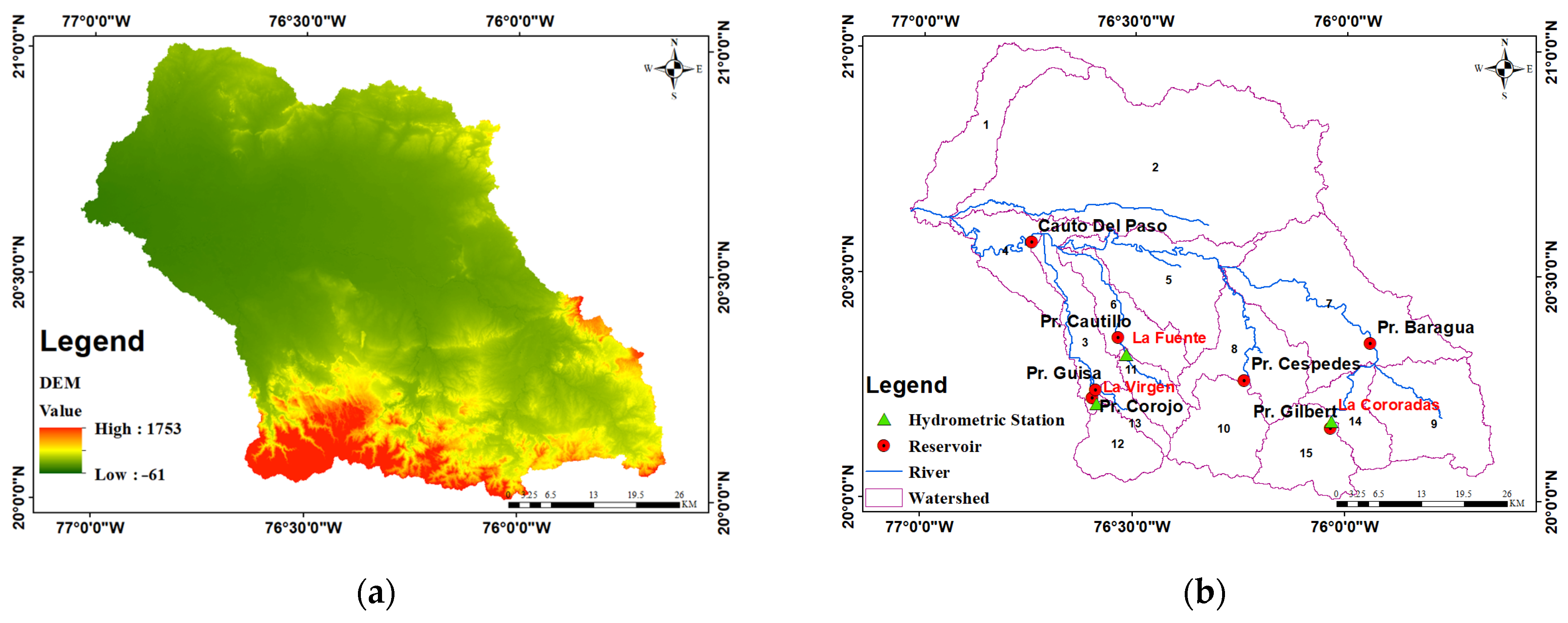
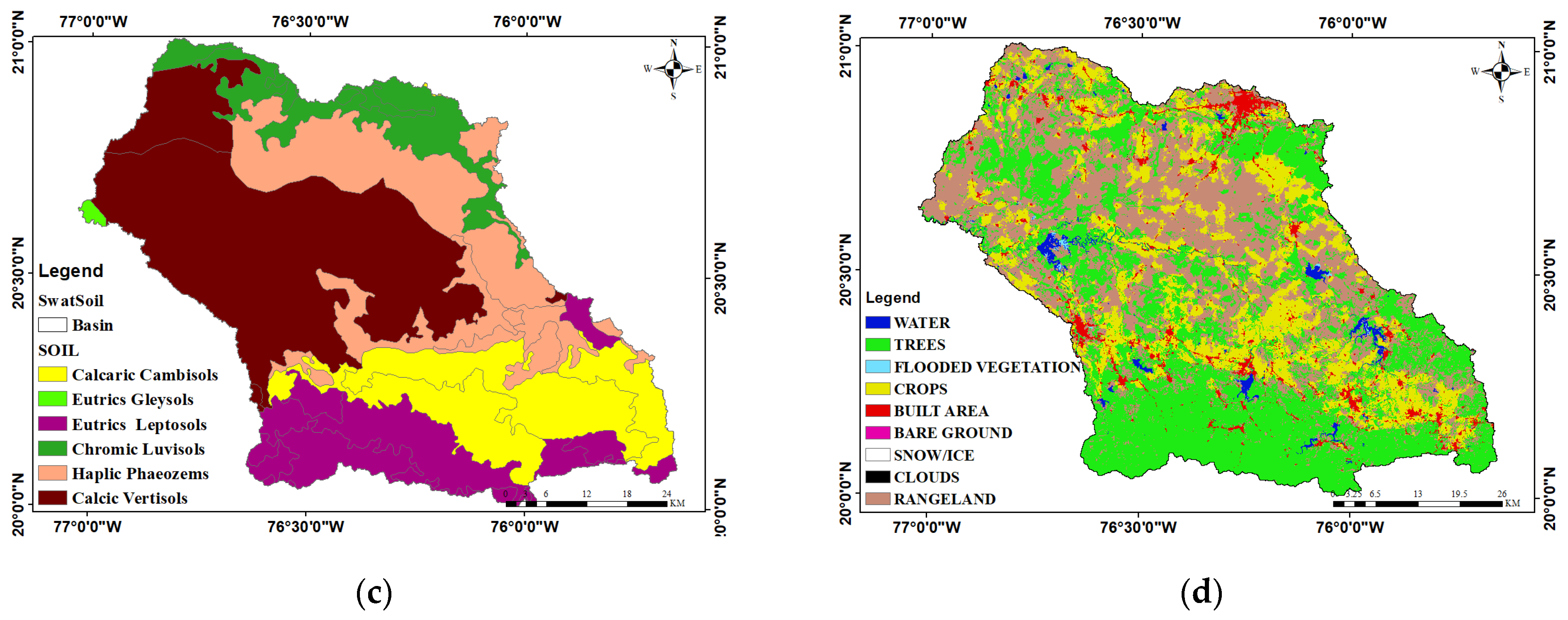

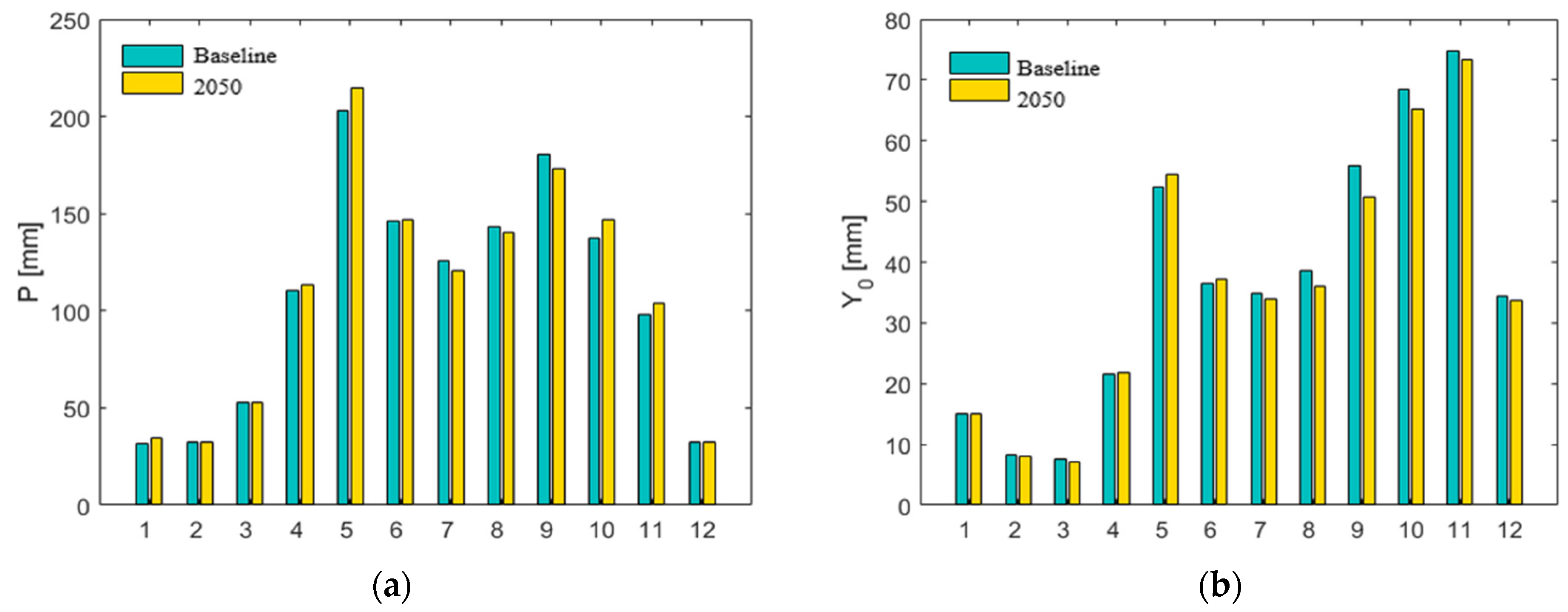


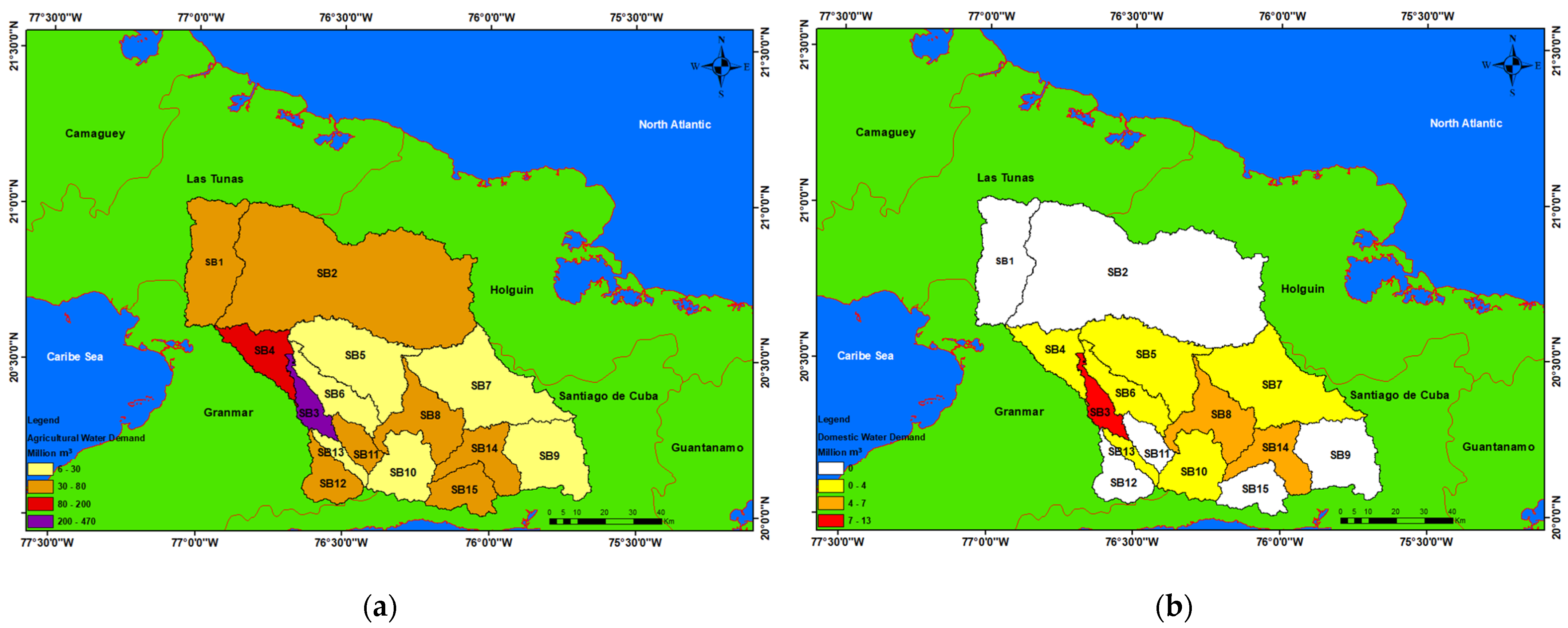
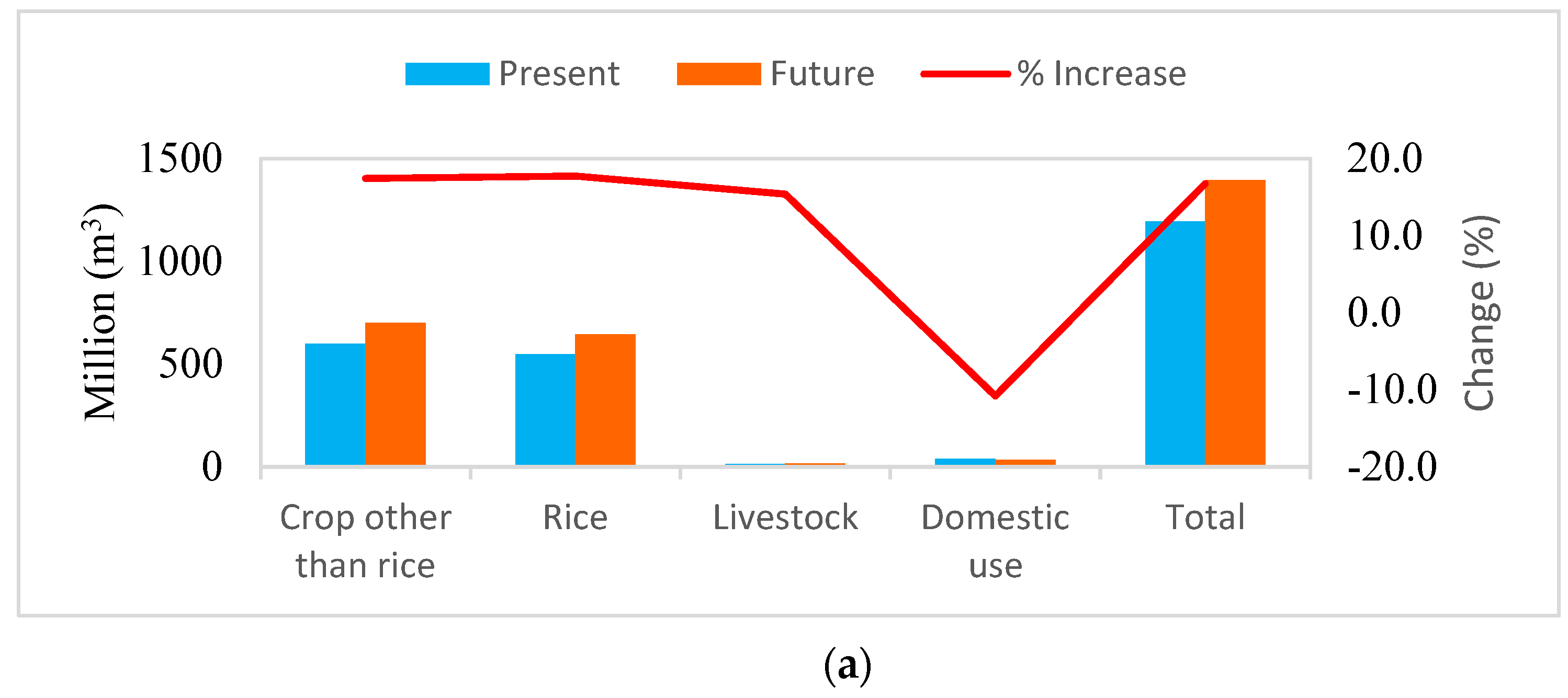
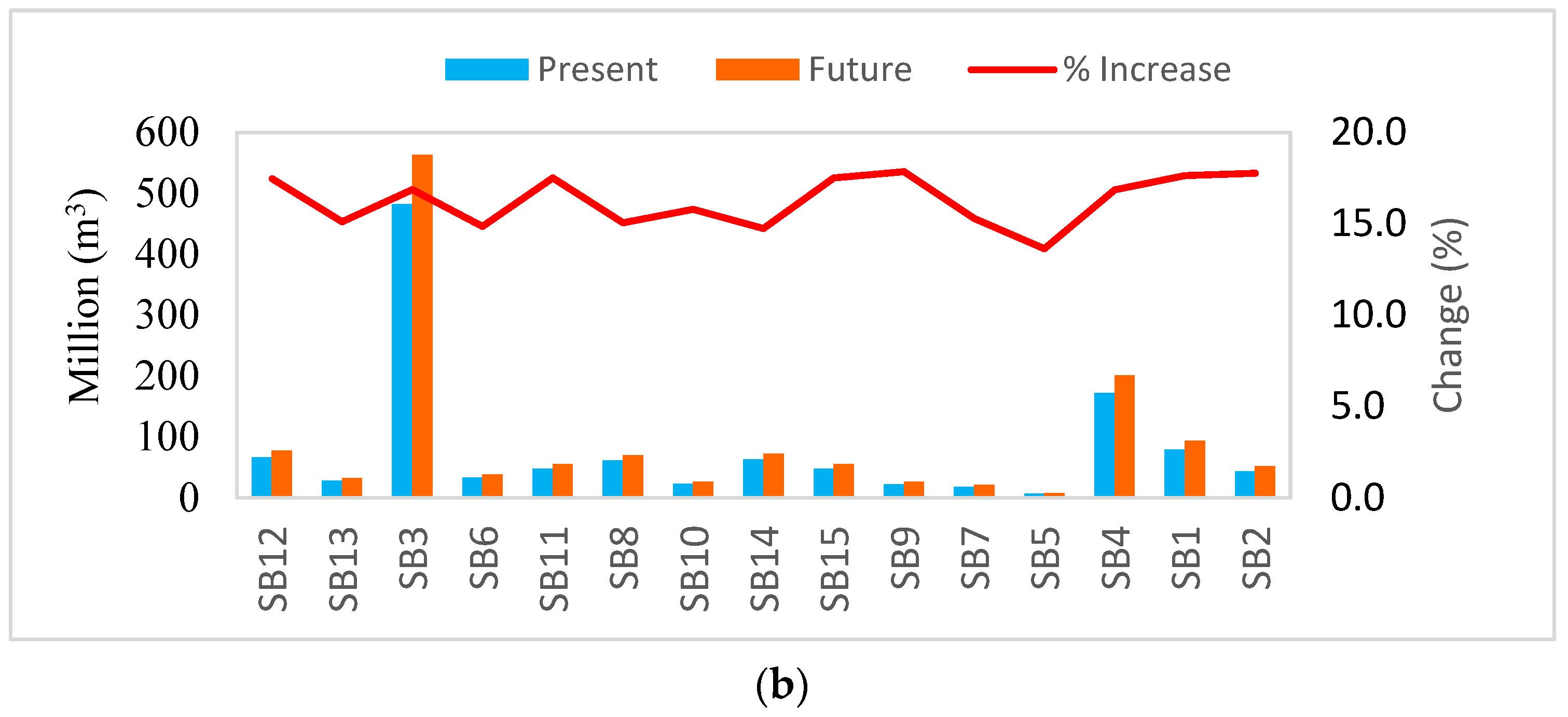
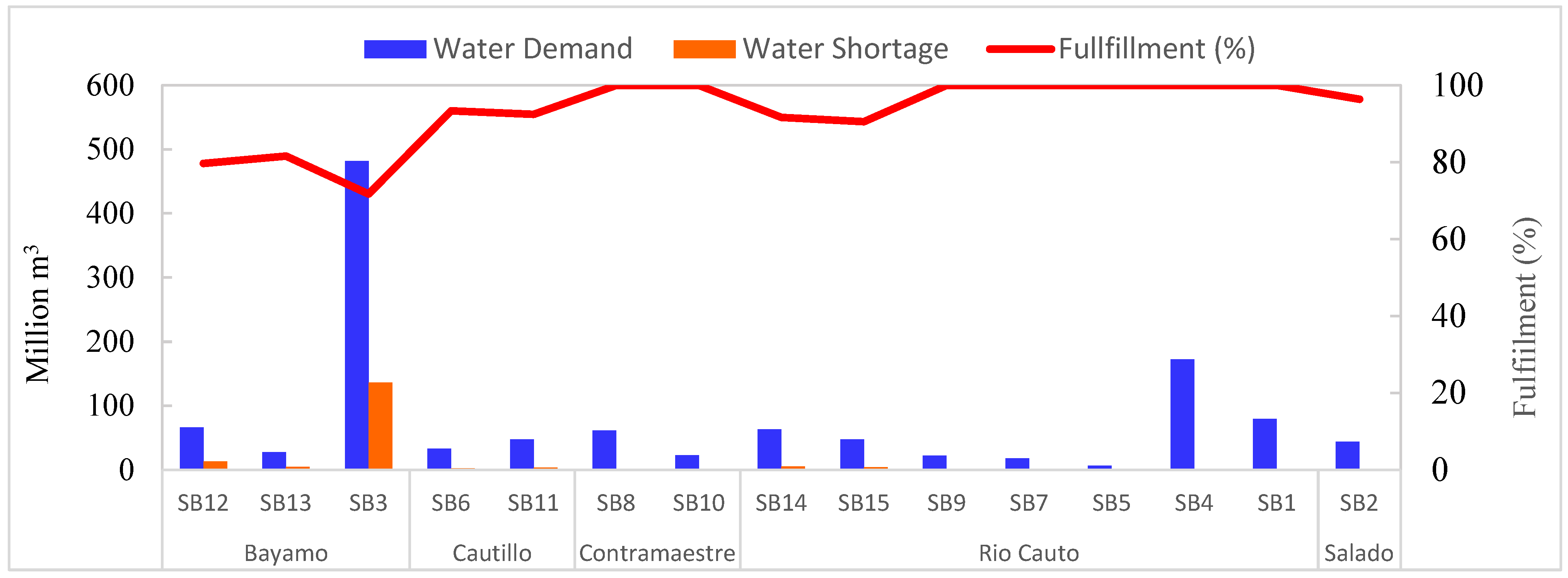
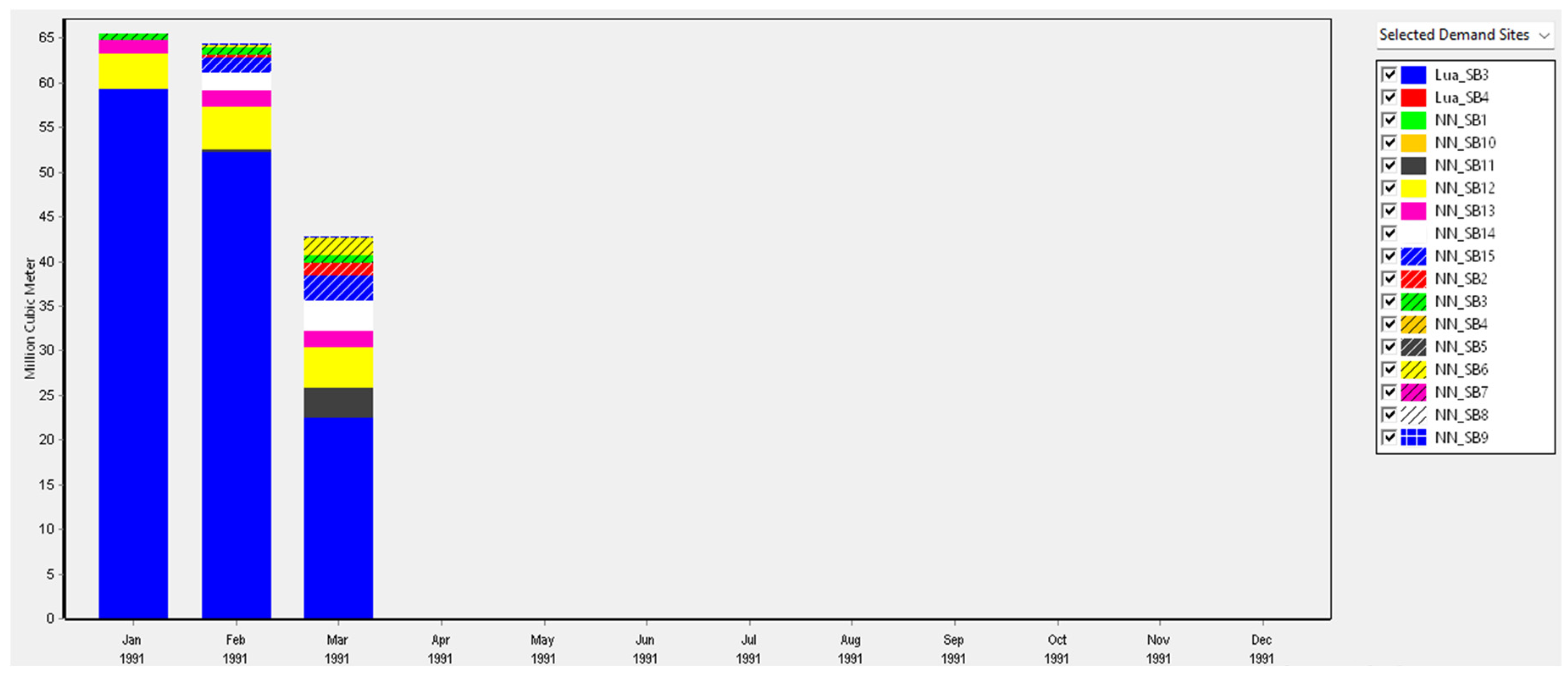

| Data Type | Resolution | Period | Source |
|---|---|---|---|
| DEM | 30 m | 2000 | Digital Elevation Model SRTM 1 Arc-Second 30 m (NASA, NGA) |
| Soil data | 1:5,000,000 | 2008 | ISRIC—World Soil Information |
| Land use | 10 m | 2022 | ESRI |
| Temperature | 0.5° × 0.5° | 1944 | NASA POWER Data Access Viewer (DAV) (1981–2022) |
| Precipitation | 0.05° × 0.05° | 1981–2022 | CHIRPS (1981–2022) |
| Population | 2022 | National office for establishment and information of the Republic of Cuba | |
| Livestock | |||
| Agricultural area |
| No. | Sub-Region | Sub-Basin/Water Demand Zone | Area (km2) | Purpose | Water Supply |
|---|---|---|---|---|---|
| 1 | Bayamo | SB12 | 266 | Irrigation Domestic use | Corojo Dam |
| 2 | SB13 | 95 | Irrigation Domestic use | Guisa Dam | |
| 3 | SB3 | 393 | Irrigation Domestic use | Guisa Dam Corojo Dam Bayamo River | |
| 4 | Cautillo | SB6 | 359 | Irrigation Domestic use | Cautillo Dam |
| 5 | SB11 | 186 | Irrigation | Cautillo Dam | |
| 6 | Contramaestre | SB8 | 527 | Irrigation Domestic use | Cespedes Dam |
| 7 | SB10 | 437 | Irrigation Domestic use | Cespedes Dam | |
| 8 | Salado | SB2 | 2712 | Irrigation | Salado River |
| 9 | SB1 | 562 | Irrigation | Cauto del Paso Dam | |
| 10 | SB4 | 367 | Irrigation Domestic use | Cauto del Paso Dam | |
| 11 | SB5 | 691 | Irrigation Domestic use | Cauto River Cauto del Paso Dam | |
| 12 | SB7 | 1176 | Irrigation Domestic use | Baragua Dam | |
| 13 | SB9 | 639 | Irrigation | Cauto River | |
| 14 | SB14 | 271 | Irrigation Domestic use | Golta Dam | |
| 15 | SB15 | 403 | Irrigation Domestic use | Golta Dam |
Disclaimer/Publisher’s Note: The statements, opinions and data contained in all publications are solely those of the individual author(s) and contributor(s) and not of MDPI and/or the editor(s). MDPI and/or the editor(s) disclaim responsibility for any injury to people or property resulting from any ideas, methods, instructions or products referred to in the content. |
© 2025 by the authors. Licensee MDPI, Basel, Switzerland. This article is an open access article distributed under the terms and conditions of the Creative Commons Attribution (CC BY) license (https://creativecommons.org/licenses/by/4.0/).
Share and Cite
Tran, B.C.; Tran, A.P.; Tran, D.H.; Nguyen, A.D.; Campbell, S.B.; Nguyen, N.A.; Le, T.H. Coupling of SWAT and WEAP Models for Quantifying Water Supply, Demand and Balance Under Dual Impacts of Climate Change and Socio-Economic Development: A Case Study from Cauto River Basin, Cuba. Water 2025, 17, 2672. https://doi.org/10.3390/w17182672
Tran BC, Tran AP, Tran DH, Nguyen AD, Campbell SB, Nguyen NA, Le TH. Coupling of SWAT and WEAP Models for Quantifying Water Supply, Demand and Balance Under Dual Impacts of Climate Change and Socio-Economic Development: A Case Study from Cauto River Basin, Cuba. Water. 2025; 17(18):2672. https://doi.org/10.3390/w17182672
Chicago/Turabian StyleTran, Bao Chung, Anh Phuong Tran, Dieu Hang Tran, Anh Duc Nguyen, Siliennis Blanco Campbell, Nam Anh Nguyen, and Thi Huong Le. 2025. "Coupling of SWAT and WEAP Models for Quantifying Water Supply, Demand and Balance Under Dual Impacts of Climate Change and Socio-Economic Development: A Case Study from Cauto River Basin, Cuba" Water 17, no. 18: 2672. https://doi.org/10.3390/w17182672
APA StyleTran, B. C., Tran, A. P., Tran, D. H., Nguyen, A. D., Campbell, S. B., Nguyen, N. A., & Le, T. H. (2025). Coupling of SWAT and WEAP Models for Quantifying Water Supply, Demand and Balance Under Dual Impacts of Climate Change and Socio-Economic Development: A Case Study from Cauto River Basin, Cuba. Water, 17(18), 2672. https://doi.org/10.3390/w17182672





